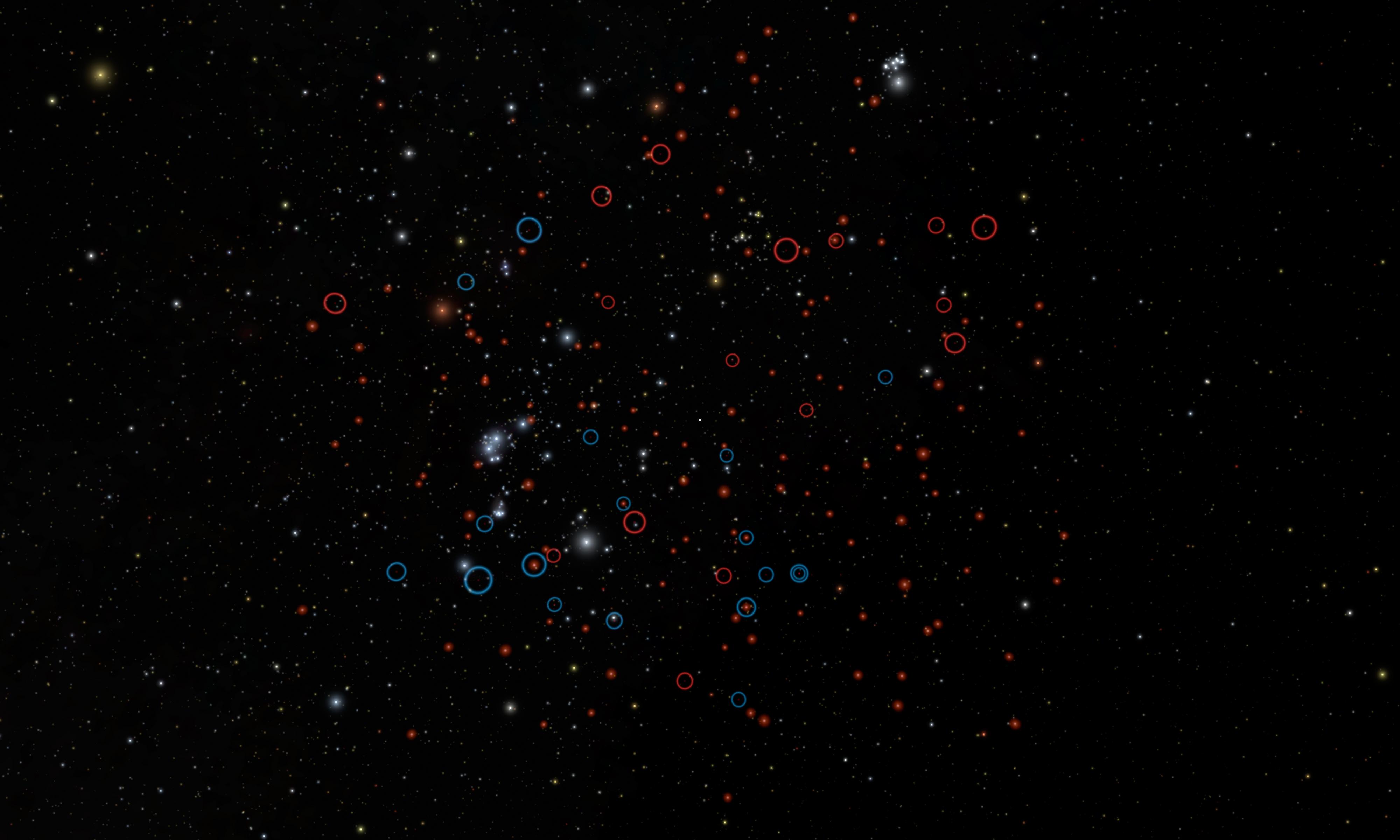Highlighting our Tiniest Neighbors

| Credit | NASA/JPL-Caltech |
|---|---|
| Language |
|
This image shows our own back yard, astronomically speaking, from a vantage point about 30 light-years away from the sun. It highlights the population of tiny brown dwarfs recently discovered by NASA's Wide-field Infrared Survey Explorer, or WISE (red circles). The image simulates actual positions of stars.
While big stars like our sun are flashy and easy to see from a distance, astronomers are also interested in our very faintest, smallest neighbors as well. One of the prime objectives of the WISE mission is to find missing "failed stars," or brown dwarfs, in the vicinity of the sun.
Astronomers are interested in brown dwarfs, objects too low in mass to shine stably as stars do, because they have cold atmospheres like those of exoplanets and are some of our nearest neighbors in space. These objects were largely uncharted prior to WISE.
This rendering accurately portrays the relative positions of the sun and its surroundings as they would appear from a vantage point about 30 light-years away. The sun is the faint yellow dot at the very center.
All brown dwarfs known within 26 light-years are circled. Blue circles are previously known brown dwarfs, and red circles are brown dwarfs identified for the first time by WISE.
The slightly larger M-dwarf stars, which are the most common type of star in the solar neighborhood, are shown with enhanced brightness to make them easier to see. They round off the rest of the local collection of objects in this region.
This updated census of our solar neighborhood now shows that brown dwarfs are much more rare than stars: there are roughly 6 stars for every known brown dwarf.
Appearing in the background are the constellation of Orion at middle left and the Pleiades star cluster near the top edge.
The video is narrated by Davy Kirkpatrick of NASA's Infrared Processing and Analysis Center at the California Institute of Technology in Pasadena. He is lead author of a paper on the new research appearing in the Astrophysical Journal.
JPL manages, and operates the Wide-field Infrared Survey Explorer for NASA's Science Mission Directorate, Washington. The principal investigator, Edward Wright, is at UCLA. The mission was competitively selected under NASA's Explorers Program managed by the Goddard Space Flight Center, Greenbelt, Md. The science instrument was built by the Space Dynamics Laboratory, Logan, Utah, and the spacecraft was built by Ball Aerospace & Technologies Corp., Boulder, Colo. Science operations and data processing and archiving take place at the Infrared Processing and Analysis Center at the California Institute of Technology in Pasadena. Caltech manages JPL for NASA.
More information is online at http://www.nasa.gov/wise and http://jpl.nasa.gov/wise.
